I want to obtain +-12VDC supply from a 24VDC supply where the total load will driver 100mA max. I tried using two power supplies but one of them blew up. I need the split supply for excitation voltage which I mentioned in my previous question. So I decided to make a spit supply from a 24VDC supply. I have some many LM7812, LM7912 or equivalent. I tried the following circuit:
But instead of +-12VDC I'm getting the following output:
These are the only components I have at the moment.How can I use them in a way to obtain +-12VDC?
edit:
Regarding @Trveor's answer:
edit2:
Discrete solution(?):


